Worse Than the 1989 Recession?
Australian Property Market Update
5 December, 2018
Doom and gloom in the media over falling house prices is escalating, with one media outlet headline warning, “Sydney housing downturn to eclipse 1989 recession.”
Wow, that sounds ominous! Is it fear porn, or are we truly headed toward a level of housing market pain equivalent to a 17 percent interest rate? Let’s breakdown the latest stats and assess what it would take for the market to devolve to such a low point.
The Auction Market
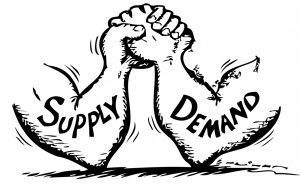
If our auction market is any indication, perhaps we are headed back to 1989.
At first glance, this week’s nationwide preliminary clearance rate of 47 percent seems to be an improvement on last week’s final result of 42 percent. However, last week’s preliminary result was essentially the same as this week (46.9 percent) on similar volume (around 2700) before being adjusted down a massive 499 basis points once all the results were counted.
This shows us that agents are still desperately trying to manage public sentiment amidst an ailing housing market by selectively reporting early auction results to soften the Monday morning headlines. It stands to reason then that this week’s final clearance rate will be back in the low-40s by the time Thursday rolls around.
They may fall even further in the Autumn. As you can see below in the chart from Corelogic , auction clearance rates are still trending down pretty hard, which means we may see auction clearance rates in the 30s before too long.

Source: CoreLogic
Sydney is currently sitting around the mid-40s, but according to an SQM Research report, there has only been three times in history when the clearance rate there fell into the 30s:
- October/November 2008 during the GFC
- May 2004 after the NSW vendor stamp duty was introduced
- July 1989 when the RBA cash rate hit 17 percent
Just because we see auction clearance rates in the 30s does not mean we are headed to property investor purgatory. After all, the GFC was just a minor blip on the radar. But agents there will be doing everything they can to manage buyer sentiment amidst the dark headlines in the media.
Here are the latest preliminary auction results from CoreLogic:

Source: CoreLogic
Expect the final result to be reported on Thursday to look more like last week’s final result detailed below:

Source: CoreLogic
How Low Can We Go?
While there’s a lot of talk at the moment about auction clearance rates trending toward the 30s, all we really need for home prices in Sydney and Melbourne to be falling is an auction clearance rate in the 40’s. Anything below 50 percent has historically meant a downward trend.
In light of weak demand and burgeoning supply, the median dwelling price in Sydney has now fallen about 8 percent in the last twelve months, down 9.5 percent from the peak 17 months ago. Melbourne home prices have fallen nearly 6 percent.
How does that compare to the housing market woes during the 1989 recession? It just so happens Sydney’s record house price falls occurred during that time (between 1989 and 1991). The total decline was… wait for it… 9.6 percent (essentially where we are now). Give it another month, and we will have surpassed the Sydney dwelling price declines of our last recession.
But across the rest of the country, it’s not so bad. Here’s what house prices movements are looking like in our other capital cities, according to CoreLogic’s metric:

Source: CoreLogic
While anyone who bought in Sydney or Melbourne a year ago is likely feeling a little anxious, we need to keep in mind that after such rapid growth outpacing inflation, we were due for a pullback. Hopefully this will be a much-needed wake-call to investors to remember the fundamentals of affordability (wage growth vs. house price growth) and understand the role cheap credit plays in the housing market.
In the News…
RBA Cash Rate on Hold Though Lending Data Looks Bleak
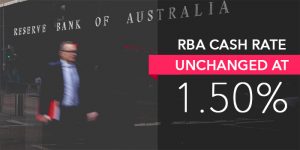
The RBA Board met yesterday and decided to leave the cash rate on hold for a 28th consecutive month, despite some less than stellar credit growth statistics. The next monetary policy decision will be on the first Tuesday of February.
The RBA’s October Financial Aggregate data (the amount of credit provided by Aussie lenders) was released last week. It’s not good news for the housing market, but there are no surprises there. Total housing credit growth figures are at the weakest point since July 1984, increasing only 0.3 percent in October.
For a deep dive into the RBA’s housing credit data, check out Corelogic’s report.
Saxo Bank Imagines the Ultimate Armageddon Scenario
Back to the topic of doom and gloom headlines… Danish Saxo Bank wins the award for most creative economic hell-on-earth scenario for the Great Southland. It’s a fun read. The Aussie bit starts on page 15 of the Outrageous Prediction 2019 report.
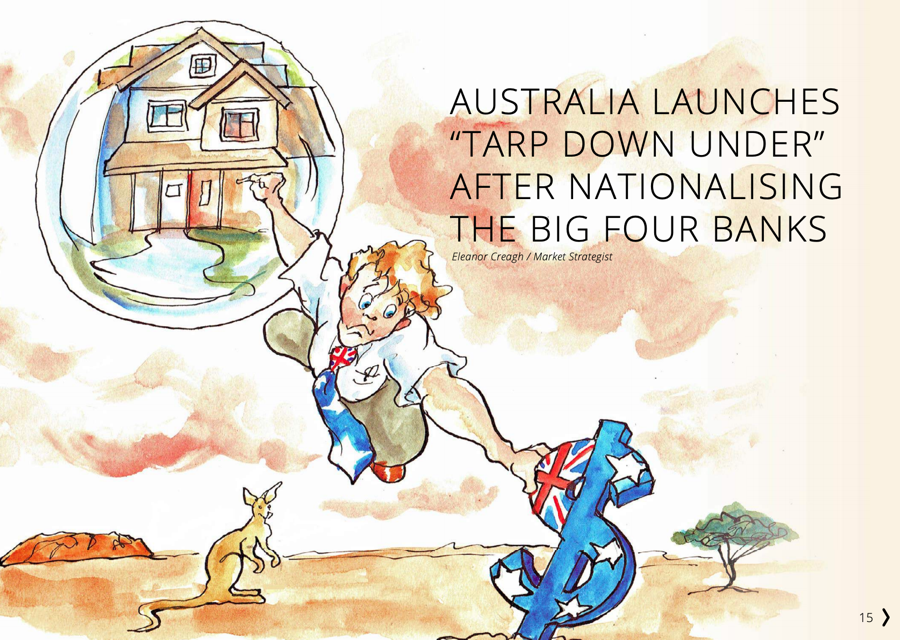
Here are a few of the highlights…
“The confluence of dramatic restrictions in credit growth, oversupply, government filibusters and a slowdown in global growth delivering an exogenous shock cement the doom loop; property prices Down Under crashing by 50%.”
“Australia falls into recession for the first time in 27 years as the plunge in property prices destroys household wealth and consumer spending.”
“Governor Lowe’s hand is forced toward unconventional monetary policy and he implements QE1 Down Under.”
The crazy part about the report is that it doesn’t actually sound all that far-fetched! OK, maybe the 50 percent price fall is a little extreme.
Bond Market Tipped to Push Interest Rates Higher
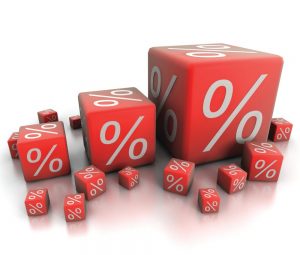 Whether we end up back in 1989 in terms of economic pain will likely depend on where variable mortgage rates go from here.
Whether we end up back in 1989 in terms of economic pain will likely depend on where variable mortgage rates go from here.
The Federal Open Market Committee (FOMC), that’s the Federal Reserve equivalent of the RBA Board, will be meeting in about two weeks to decide whether to raise its target funds rate. Most economists expect the Fed to hike rates at that meeting, which means the Fed will be buying fewer bonds.
This effectively causes bond prices to fall and bond yields to rise. The knock-on effect tends to be an increase in wholesale lending rates for Aussie banks, which in turn leads to rising borrowing costs for Aussie borrowers. As interest rates rise here at home – well – you know where that leads.
Is It Really Worse Than the 1989 Recession?
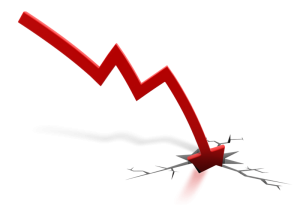 Earlier in the year, Steve McKnight and I sat in his office and worked out what it might take in the economy today for households to experience a similar level of pain as 1989.
Earlier in the year, Steve McKnight and I sat in his office and worked out what it might take in the economy today for households to experience a similar level of pain as 1989.
Back then, the cash rate rose to 17 percent and variable mortgage rates spiked into the low-20 percent range. That seems completely out of the realm of possibility today, so no dramas, right?
Well, not exactly. Home prices have risen a lot since then, but wages haven’t quite kept pace. As Australians have taken on more and more debt, with less and less discretionary income to absorb increases in interest rates, our economy has become more fragile. This means that interest rates don’t actually need to rise to 17 percent for Aussies to experience a 1989-level of mortgage stress.
In the end, after Steve and I crunched the numbers, we worked out that the standard variable mortgage rate would only need to rise about two percent, to around 6.5 percent, for mortgage holders in Melbourne and Sydney to feel the same pain as borrowers felt in 1989, when interest rates were over 17 percent.
Just in case you missed that… 17+ percent in 1989 = 6.5 percent in 2019.
If you’re interested, here’s a screenshot of the numbers we came up with…

So is the housing market really looking worse than the 1989 recession? Nah; we’ve still got room for interest rates to move a little higher.
Comments
Got something to say? Post a comment...
You must be logged in to post a comment.

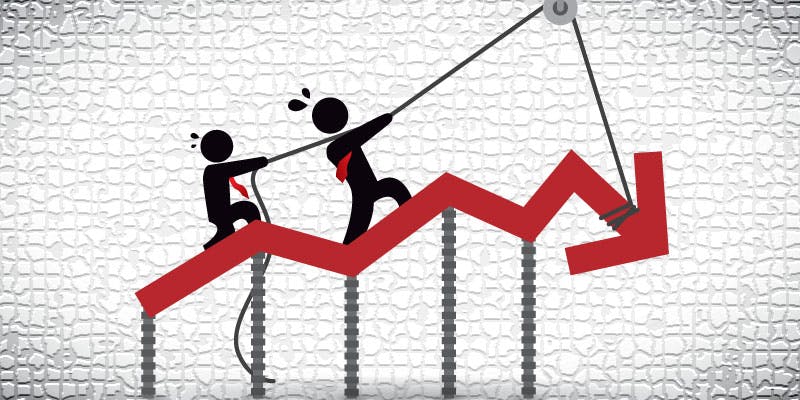
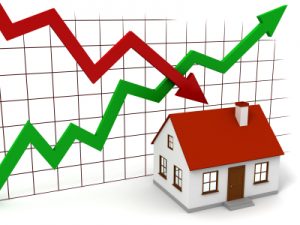




I think freehold, detached houses will go sideways now because owner occupiers can’t afford to upgrade and investors still get their rents. Highly geared apartments and townhouses will suffer most. 1987 is 30 years ago, so not in the financial memories of most under-50s, ie most first time buyers; nor in the 20-year historical charts of spruikers. The refusal to refinance interest-only loans is a new factor and a downward pressure on prices, as are Labor’s purported intentions. The banks have played the government effectively. Abetted by their man in Canberra (Malcolm Turnbull) the Royal Commission was held off as long as possible while the banks did damage control. Now, under the banner of better lending practices, they are choking the economy and holding the gun to the Government’s re-election chances. Watch for increased credit growth in return for watered-down re-regulation of the financial sector. Labor’s policy will limit investment. Our population is increasing, so rising demand will meet decreasing supply to at least sustain prices and drive up rents (remember Keating). State and Local Governments are drunk on the transfer duties and rates bonanzas of the last decade and cannot afford a massive retracement.
Good points Mike. While I still expect prices to fall further in Melbourne and Sydney (15-20% from peak), I agree a move sideways is likely, as long as investors don’t become forced sellers. No one can afford a massive retracement, so regulators will do all they can to balance the supply and demand of housing while boosting cpi/wages. That’s a tall order though.
Really really good educational article, I love the comparison to 1989 and how you guys used the 6.5% comparison, no doubt you factored in inflation wages etc, no worse than when general public fail to do so, comparison like that is key, I heard economists and other financial experts talking and they are again saying that we could go all the way the conclusion of 2020 without a raise, that is absolutely ludicrious! Basically over 4 years with no movement! Household debt levels combined with poor wage growth are the main reasons that they have to justify their predictions, let’s see what transpires. Your thoughts Jason please?
Yeah, I can’t imagine the RBA raising rates anytime soon. As you say, neither households nor the labour market could afford it. I could see two more rate cuts though, down to 1 percent. It really depends on what the Fed does.
Wow! Two more cuts would be unbelievable!!! Already at record lows!
Will prices in Gold Coast be coming down anytime soon?
Your guess is as good as mine. We’ll see what happens in the coming months with the royal commission report, a possible Labor government, etc.